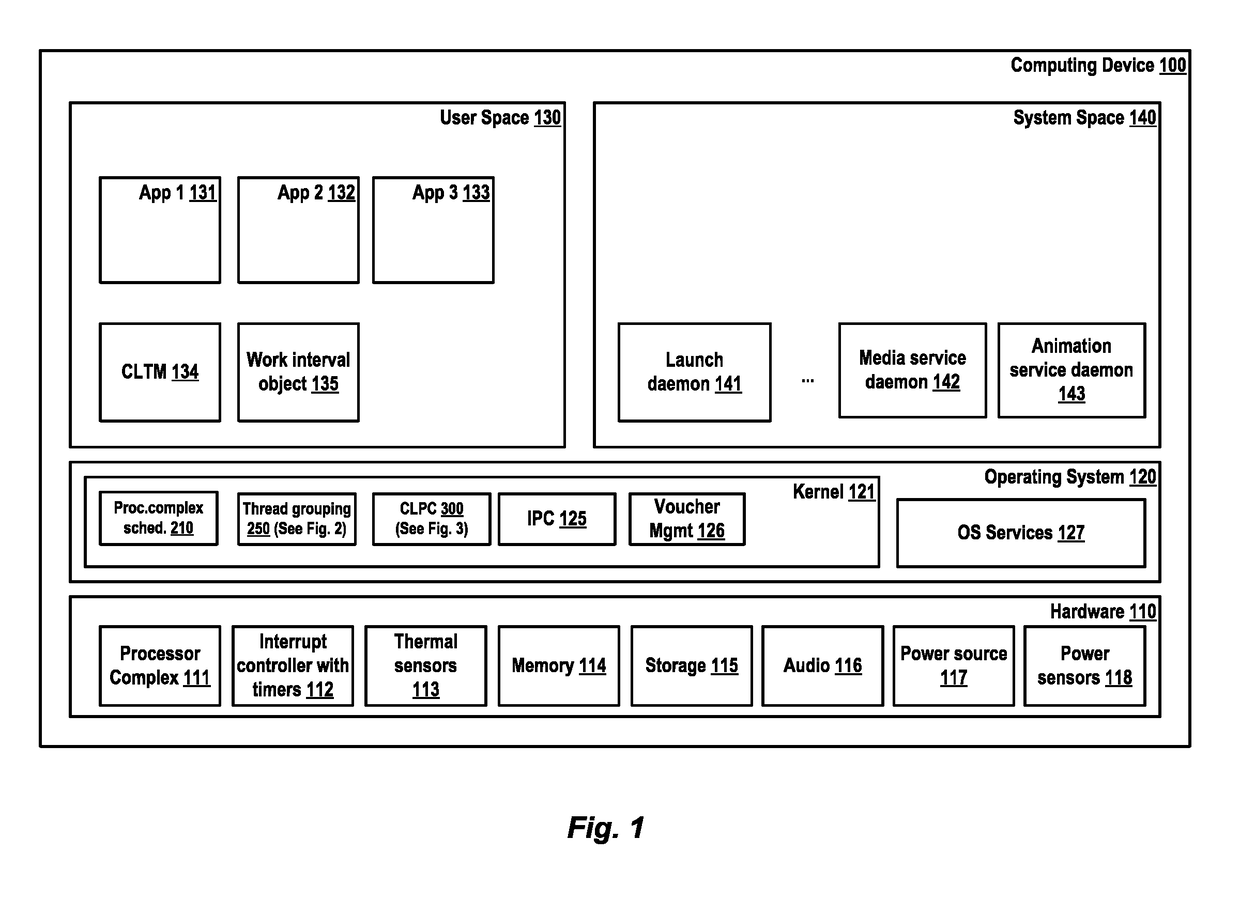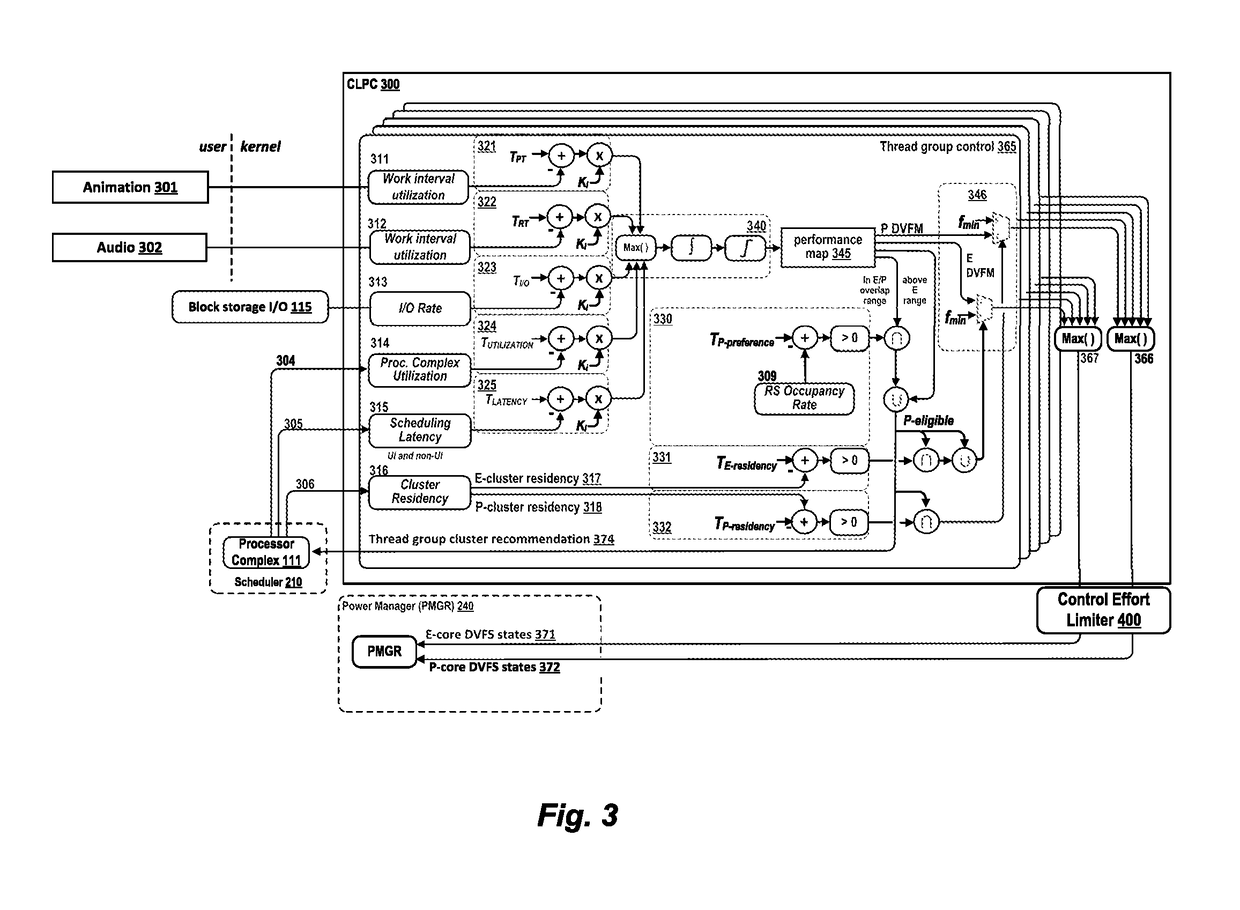Scheduler for amp architecture using a closed loop performance controller and deferred inter-processor interrupts
- Summary
- Abstract
- Description
- Claims
- Application Information
AI Technical Summary
Benefits of technology
Problems solved by technology
Method used
Image
Examples
first embodiment
[0263]In a first embodiment, a method of running threads on a system having a processor that has a first cluster of one or more cores and a second cluster of one or more cores can include grouping threads of one or more processes into one or more thread groups. A first thread of a first thread group can be run on a core of the first cluster type. A plurality of thread execution metrics of the first thread can be incorporated with a plurality of thread execution metrics of the first thread group. A first control effort can be determined for the first thread group, based at least in part on samples of the plurality of thread group metrics. A first, or second, core type can be recommended for the first thread group type, and a DVFS state for the first thread group can be recommended. In an embodiment, the control effort can be mapped to a performance map of core clusters and DVFS states that are characterized by control effort. In an embodiment, the processor can comprise an asymmetric...
second embodiment
[0264]In a second embodiment a method of grouping threads into thread groups is performed on a system comprising an asymmetric multi-core processor having a plurality of cores of at least two different core types. The method includes launching an application program comprising a plurality of processes and assigning each of the plurality of processes to a first thread group. In response to determining that a process in the plurality of processes causes a work interval object to be generated, threads of the process can be assigned to a second thread group, different from the first thread group. At least one thread from the first thread group is executed. A plurality of thread execution metrics of threads in the first thread group is determined, and a processor core type for threads of the first thread group is recommended to a scheduler, based at least in part on the thread execution metrics of the first thread group. In an embodiment, in response to determining that a thread in the p...
third embodiment
[0270]In a third embodiment, a method of processing work using a work interval object on an AMP can include creating a work interval object associated with a first thread group having a first thread group identifier. One or more threads associated with the work interval object can perform work toward a common goal of the work interval object within an identified interval of time. The method can also include receiving a request from a thread of a process associated with a second thread group having a second thread group identifier to adopt the first thread group identifier, attributing metrics of work performed by the thread to the first thread group identifier, in response to determining that the thread has adopted the first thread group identifier, and determining a processor core type to run one or more threads having the first thread group identifier based at least in part upon samples of metrics of work associated with the first thread group identifier. The work interval object ...
PUM
 Login to View More
Login to View More Abstract
Description
Claims
Application Information
 Login to View More
Login to View More - R&D
- Intellectual Property
- Life Sciences
- Materials
- Tech Scout
- Unparalleled Data Quality
- Higher Quality Content
- 60% Fewer Hallucinations
Browse by: Latest US Patents, China's latest patents, Technical Efficacy Thesaurus, Application Domain, Technology Topic, Popular Technical Reports.
© 2025 PatSnap. All rights reserved.Legal|Privacy policy|Modern Slavery Act Transparency Statement|Sitemap|About US| Contact US: help@patsnap.com



